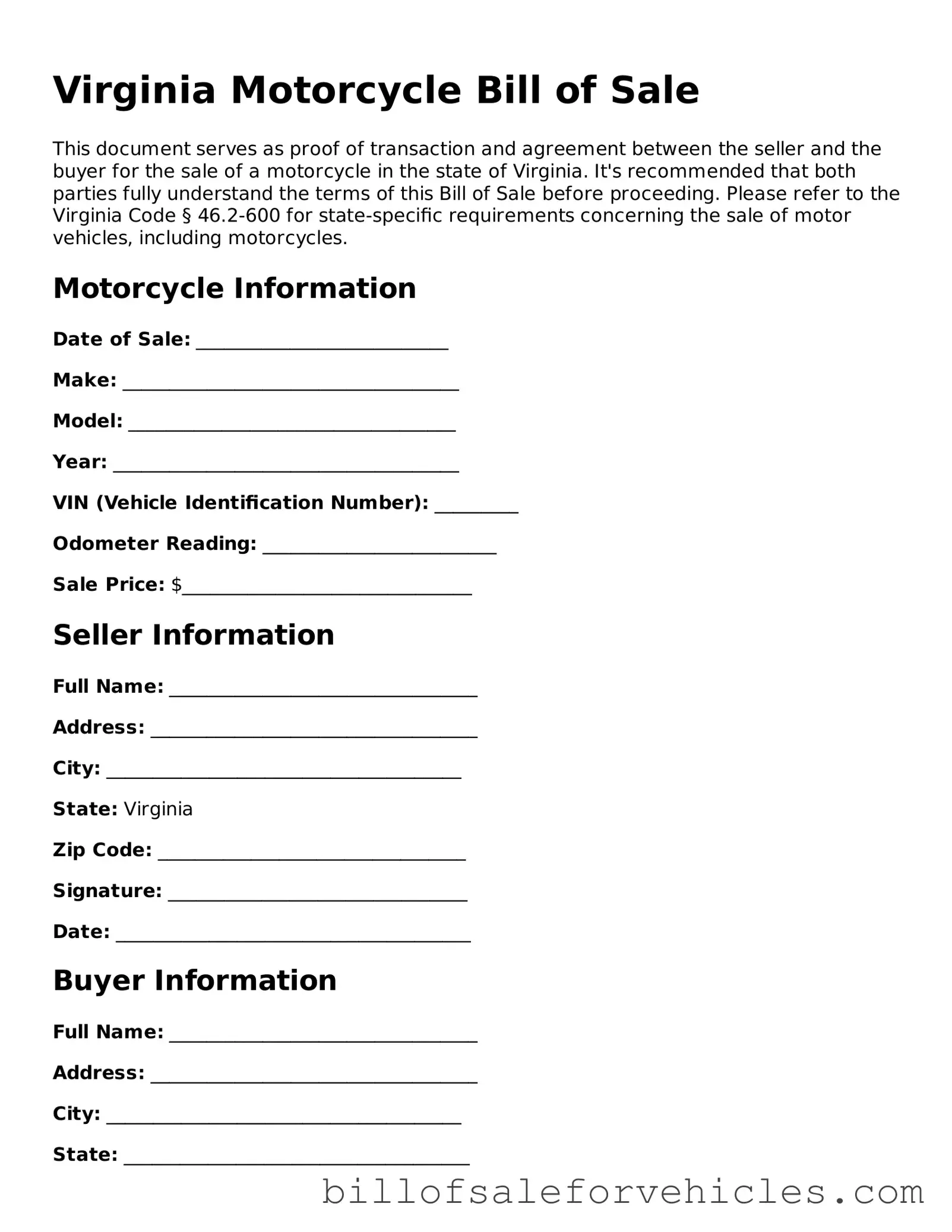Virginia Motorcycle Bill of Sale
This document serves as proof of transaction and agreement between the seller and the buyer for the sale of a motorcycle in the state of Virginia. It's recommended that both parties fully understand the terms of this Bill of Sale before proceeding. Please refer to the Virginia Code § 46.2-600 for state-specific requirements concerning the sale of motor vehicles, including motorcycles.
Motorcycle Information
Date of Sale: ___________________________
Make: ____________________________________
Model: ___________________________________
Year: _____________________________________
VIN (Vehicle Identification Number): _________
Odometer Reading: _________________________
Sale Price: $_______________________________
Seller Information
Full Name: _________________________________
Address: ___________________________________
City: ______________________________________
State: Virginia
Zip Code: _________________________________
Signature: ________________________________
Date: ______________________________________
Buyer Information
Full Name: _________________________________
Address: ___________________________________
City: ______________________________________
State: _____________________________________
Zip Code: _________________________________
Signature: ________________________________
Date: ______________________________________
Agreement
All parties acknowledge the receipt of this bill of sale and certify that the information provided is correct to the best of their knowledge. The motorcycle is sold "as-is" without any warranties, express or implied. The buyer accepts full responsibility for the motorcycle after the sale date.
Additional Information
It is the buyer's responsibility to register the motorcycle in their name at the Virginia Department of Motor Vehicles (DMV). Failure to register the vehicle in a timely manner may result in penalties.
